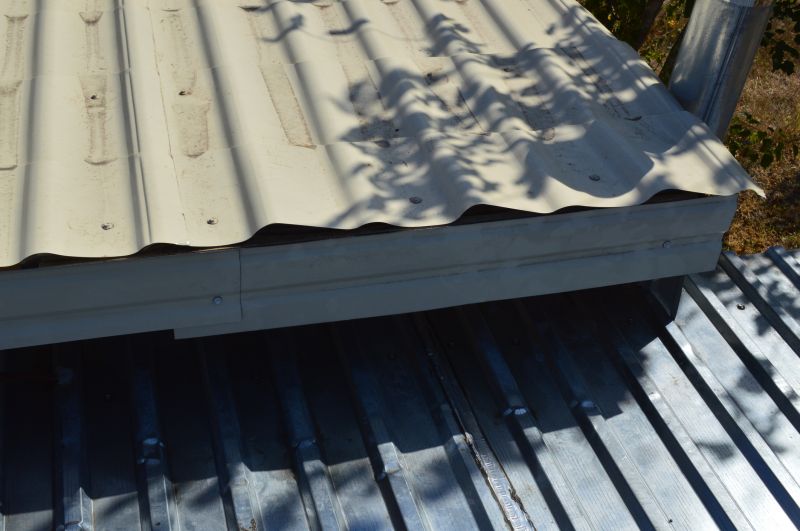Top-Rated Materials For Roof Flashing Installations To Enhance Safety
Learn about high-quality products that improve installation safety and ensure a secure, weatherproof roof.
 Roof flashing products are essential components in roofing systems, designed to direct water away from critical areas such as joints, valleys, chimneys, vents, and roof penetrations. Proper installation of flashing helps prevent leaks and water damage, ensuring the longevity and durability of a roof. These products come in various materials, shapes, and sizes to accommodate different roof types and architectural styles. Selecting the right flashing involves understanding the specific requirements of the roof, the materials used, and the environmental conditions the structure faces.
Roof flashing products are essential components in roofing systems, designed to direct water away from critical areas such as joints, valleys, chimneys, vents, and roof penetrations. Proper installation of flashing helps prevent leaks and water damage, ensuring the longevity and durability of a roof. These products come in various materials, shapes, and sizes to accommodate different roof types and architectural styles. Selecting the right flashing involves understanding the specific requirements of the roof, the materials used, and the environmental conditions the structure faces.
Top Overall Option
Flexible Metal Flashing Sheets
Flexible metal flashing sheets made from high-quality aluminum or copper are versatile options suitable for a wide range of roof configurations. Their malleability allows for easy shaping around complex roof features, ensuring a tight seal and effective water diversion. These sheets are durable, resistant to corrosion, and can be cut or bent on-site to fit specific needs, making them a popular choice for both professional installers and experienced DIY enthusiasts.
Types of Products For Roof Flashing Installations
Step Flashing
Designed to be installed at roof-to-wall intersections, step flashing consists of individual pieces that overlap to create a water-resistant barrier.
Continuous Flashing
A long, single piece of flashing used to cover larger areas such as valleys or along roof edges, providing a seamless protection layer.
Base Flashing
Installed at the bottom of chimneys or vents, base flashing helps direct water away from these penetrations.
Kickout Flashing
Placed at the junction of different roof surfaces to guide water away from walls or eaves.
Valley Flashing
Specifically designed for roof valleys, these products channel water efficiently down the roof slope.
Counter Flashing
Installed over base flashing, counter flashing provides an additional layer of water resistance and aesthetic finish.
Venting Flashing
Includes integrated vents to allow for proper attic ventilation while sealing roof penetrations.
Pipe Flashing
Used around vent pipes and other circular roof penetrations, these are typically made from rubber or metal.
Chimney Flashing
Custom-shaped to fit around chimneys, preventing water ingress at the base and sides.
Skirt Flashing
Installed along the edges of roof penetrations for additional waterproofing.
Drip Edge Flashing
Installed along roof edges to direct water into gutters and prevent water from seeping under roofing materials.
Corner Flashing
Used at roof corners to seal joints and prevent water infiltration.
Popular Choices
A widely used material due to its lightweight nature and resistance to rust, suitable for many residential applications.
Valued for its durability and aesthetic appeal, often used in historic or high-end roofing projects.
Known for strength and corrosion resistance, ideal for challenging environments.
Versatile and easy to shape, suitable for complex roof configurations.
Flexible and weather-resistant, commonly used around vent pipes.
Designed for quick installation at roof corners and joints.
An easy-to-apply option for sealing around roof penetrations and joints.
Designed to channel water efficiently in roof valleys.
Traditional material offering malleability and long-term durability, often used in historic restorations.
Includes integrated vents for enhanced attic ventilation while sealing roof penetrations.
Made to order for unique roof configurations, ensuring precise fit and protection.
Cost-effective and resistant to rust, suitable for various applications.
Materials commonly used for roof flashing include aluminum, copper, stainless steel, and lead. Each material offers distinct advantages in terms of corrosion resistance, flexibility, and ease of installation. For instance, aluminum flashing is lightweight and resistant to rust, making it suitable for many residential applications. Copper, while more expensive, provides excellent durability and aesthetic appeal. Stainless steel offers strength and corrosion resistance, especially in harsher environments. Properly installed flashing not only prevents water ingress but also enhances the overall integrity of the roofing system.
Installation techniques vary depending on the type of flashing and the roof design. Some flashing products are designed for easy DIY installation, featuring flexible materials and pre-formed shapes. Others may require professional skills to ensure proper sealing and integration with other roofing components. When selecting flashing, it is important to consider compatibility with roofing materials, ease of handling, and the specific areas of the roof that need protection. Regular maintenance and inspections can also help identify potential issues before they lead to leaks or damage.
Overall, choosing the right roof flashing products involves evaluating the specific needs of your roofing project, understanding the different types available, and ensuring proper installation practices. Investing in quality flashing products and correct installation techniques can contribute to a more durable, weather-resistant roof that protects your property for years to come.
Key Buying Considerations
- Material durability and resistance to corrosion
- Compatibility with existing roofing materials
- Ease of installation for DIY projects or professional work
- Flexibility and ability to conform to roof contours
- Weather resistance and suitability for local climate conditions
- Size and dimensions to fit specific roof areas
- Sealing capabilities to prevent water infiltration
- Aesthetic compatibility with roof design
- Cost and long-term value
- Availability of custom shapes or pre-formed options
- Ease of handling and cutting on-site
- Compatibility with flashing tapes or sealants
- Presence of integrated features like vents or kickouts
- Manufacturer reputation and product reviews
- Warranty or guarantee offered by the supplier
This page contains affiliate links. We may earn a commission if you purchase through these links, at no additional cost to you.
